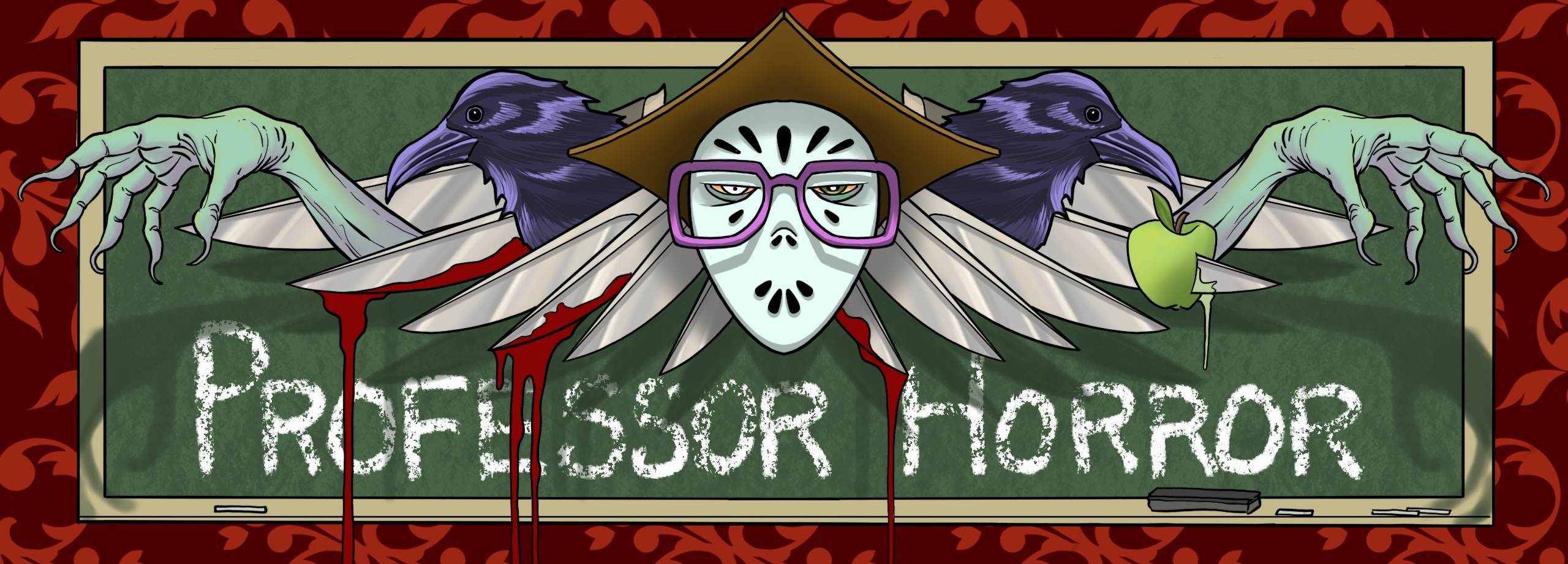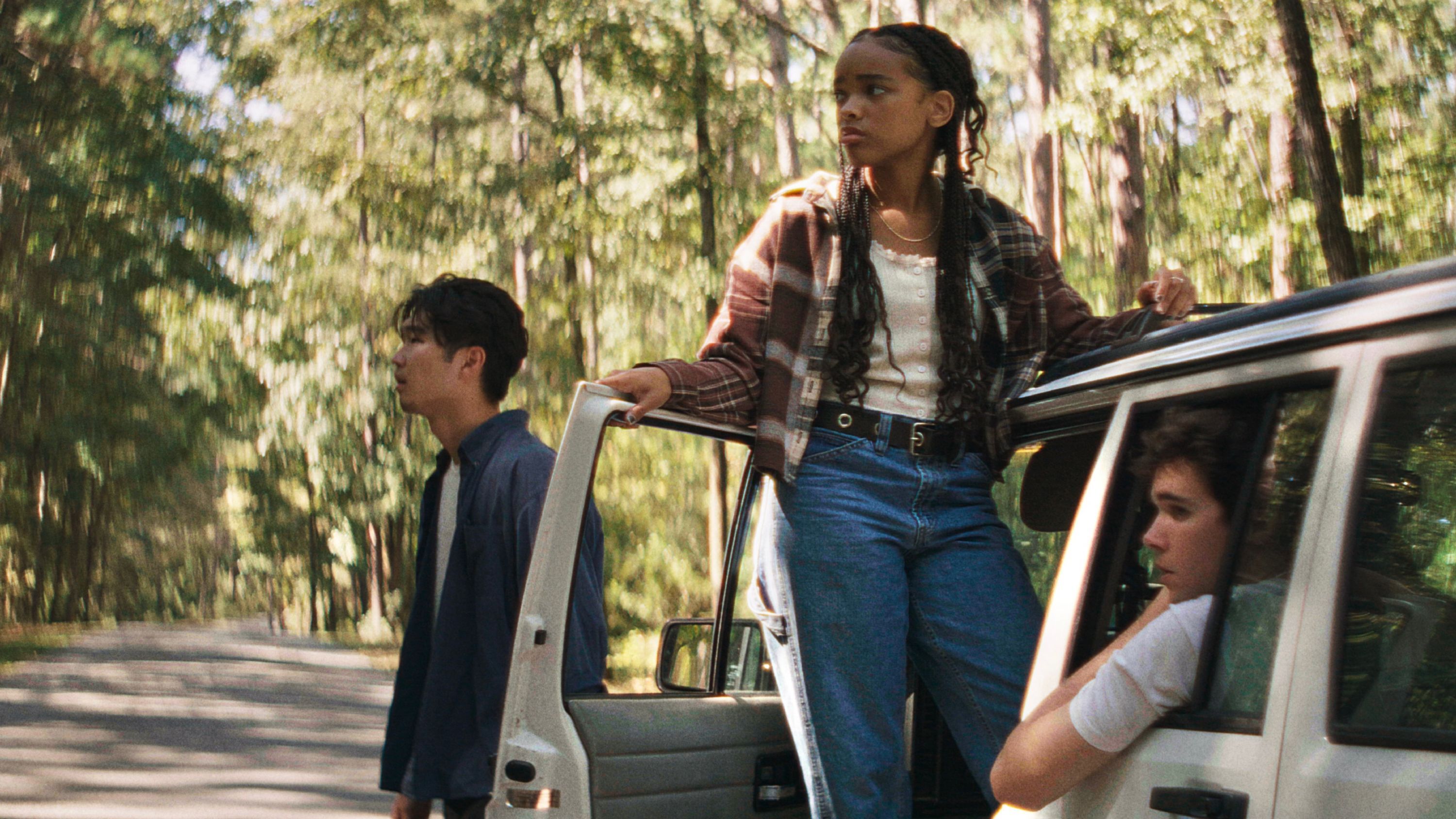
Where Horror Gets Studied, Skewered, and Celebrated.
Newest articles and reviews
Fantasia Fest Review: IT ENDS is the Horror We Carry with Us
By: Professor Horror
In IT ENDS, horror doesn’t announce itself with shrieks or shocks...it sits beside you quietly, strapped in and smiling, waiting for the moment when you realize it’s never leaving. Playing at Fantasia Fest 2025, Alexander Ullom’s remarkable debut feature transforms the simple premise of a group of recent college grads stuck on an endless road as they travel into a deeply resonant allegory for the inertia, uncertainty, and quiet despair that so often follows us into adulthood.
The story begins with the familiar: a dusty Jeep, four friends, a road trip that doubles as a send-off to their youth. Tyler, the emotionally barricaded driver (played with impressive restraint by Mitchell Cole), is joined by James, Fisher, and Day (Phineas Yoon, Noah Toth, and Akira Jackson), whose banter, teasing, and shared history initially provide a sense of warmth and ease. Their dynamic feels lived-in rather than scripted and is full of the meandering conversations, quiet irritations, and affectionate jabs that define long-term friendship. They have normal conversations like, who would you want in a fight 10,000 rats, 50 hawks, 5 gorillas, or a guy with a gun, as well as talk of the future. All which serves as filler for the awkward void that often opens up right before life is supposed to “start.”
But before long, the road begins to warp. Not in any overtly supernatural way at first...just subtle, eerie inconsistencies: signs they’ve passed before, a sense of déjà vu, the creeping realization that no matter how far they drive, they’re not getting anywhere. They attempt to turn around. They stop the car. They get out. But nothing changes. Instead of answers, they find a scary presence in the woods that forces them back into the car. Sleep becomes impossible. Hunger fades. Fuel doesn’t run out. The Jeep, once a vehicle of motion, becomes their prison, their coffin, sanctuary, and purgatory all at once. Visually, the film is a masterclass in claustrophobic storytelling. Cinematographers Evan Draper and Jazleana Jones make excellent use of reflective surfaces, windshield frames, and harsh interior lighting to shrink the world until the characters can barely move without confronting themselves. As time bends and direction loses meaning, the aspect ratio tightens and the camera draws closer, emphasizing the emotional and physical constriction. In this world, the most terrifying thing isn’t what lies outside the car, but the sense that even if there were something out there, it wouldn’t matter because there is no “outside” anymore…just the illusion of movement.

What’s most haunting about IT ENDS isn’t the horror elements themselves (though they are effectively chilling) but the metaphor they quietly reinforce as they show that early adulthood, for many, feels like a trackless void we’re expected to navigate by instinct alone. The job market is bleak. The world feels increasingly broken. Our relationships are fragile, and the scripts we were given (go to school, get a job, build a life) no longer apply. The characters, like so many of us, respond to this with rituals meant to keep the void at bay: rules about when to talk, when to laugh, when to be silent. They try to manufacture purpose. But when the structure cracks (as it inevitably does) the dread creeps in, and it becomes clear that the real horror isn’t dying on the road but never getting off it. And yet, the film never falls into full nihilism. There is humor here (it is often dark but never cynical) and tenderness that cuts through the despair. The dialogue, particularly in the first half, is sharp and revealing, full of gallows humor and casual existential musings that feel deeply of the moment. It’s a film that understands how people cope with unknowing: by teasing, by distracting, by holding each other a little too tightly even when they’re drifting apart.
Ullom’s boldest move isn’t the setup, but the tonal shift that comes midway through the film. What begins as a contained horror narrative steadily opens into something more contemplative and elliptical. The tension doesn’t fade, but it evolves, asking more abstract and difficult questions. What do we do when forward motion becomes meaningless? What’s the right response to futility? Is it resistance, surrender or...silence? IT ENDS doesn’t answer these questions, nor does it try to. It simply lets them hang in the air, like the dense heat inside the car or the hum of tires on a road that never changes. This is the kind of film that lingers. It doesn’t slam the door behind you, but it leaves it slightly ajar, whispering possibilities you can’t quite shake. You’ll think of it later...when you’re stuck in traffic, or scrolling job listings at midnight, or sitting in the passenger seat of your own life wondering if you're heading anywhere at all. Ullom captures a kind of generational fatigue that rarely gets such honest treatment on screen: the moment when the road stops being a metaphor and becomes the thing itself.
Grubby's Hole
About Professor Horror
At Professor Horror, we don't just watch horror: we live it, study it, and celebrate it. Run by writers, critics, and scholars who've made horror both a passion and a career, our mission is to explore the genre in all its bloody brillance. From big-budget slashers to underground gems, foreign nightmares to literary terrors, we dig into what makes horror tick (and why it sticks with us). We believe horror is more than just entertainment; it's a mirror, a confession, and a survival story. And we care deeply about the people who make it, love it, and keep it alive.